 The sweltering Summer temperatures have wine lovers around the globe craving deliciously chilled white wines this time of year. Which brings me to the point of this post. As a Wine Educator, Certified Sommelier and Proprietor of The Wine Atelier online wine boutique, I often tell my students and clients to "drink what you like" and I do sincerely mean that...most of the time. Where I feel the need to intervene at times is if I suspect my fellow wine lovers are being taken advantage of or duped in some way and are being sold a bill of goods instead of a good bottle of wine.I'm afraid this is what has happened with Pinot Grigio, the benign, white wine-producing grape variety found predominantly in Italy's Trentino-Alto Adige region. Pinot Grigio in its most banal form seems to have blossomed into a vinous epidemic here in the US, with one brand in particular garnering more than $20 a bottle retail and over $60 a bottle on local restaurant wine lists here in Delray Beach, Florida - considerably more than the next Pinot Grigio on the list! It's bad enough to foist an insipid wine on the wine consuming public but to financially gouge them as well? The real tragedy here is the number of infinitely more interesting and enjoyable white wines in the world, many of which are from Italy, that go unnoticed as a result of the obsession with this uninspiring wine. Here's a few reasons why you should just say no to Pinot Grigio this Summer:
The sweltering Summer temperatures have wine lovers around the globe craving deliciously chilled white wines this time of year. Which brings me to the point of this post. As a Wine Educator, Certified Sommelier and Proprietor of The Wine Atelier online wine boutique, I often tell my students and clients to "drink what you like" and I do sincerely mean that...most of the time. Where I feel the need to intervene at times is if I suspect my fellow wine lovers are being taken advantage of or duped in some way and are being sold a bill of goods instead of a good bottle of wine.I'm afraid this is what has happened with Pinot Grigio, the benign, white wine-producing grape variety found predominantly in Italy's Trentino-Alto Adige region. Pinot Grigio in its most banal form seems to have blossomed into a vinous epidemic here in the US, with one brand in particular garnering more than $20 a bottle retail and over $60 a bottle on local restaurant wine lists here in Delray Beach, Florida - considerably more than the next Pinot Grigio on the list! It's bad enough to foist an insipid wine on the wine consuming public but to financially gouge them as well? The real tragedy here is the number of infinitely more interesting and enjoyable white wines in the world, many of which are from Italy, that go unnoticed as a result of the obsession with this uninspiring wine. Here's a few reasons why you should just say no to Pinot Grigio this Summer:
With over 3,000 wine grape varieties out there you could easily drink a different wine every night of the week for a very long time and never have the same one twice. How exciting, right? Yet many of us still frequently find ourselves in a wine rut and while we all have our favorites, mixing it up regularly helps develop your palate which is defined as much by what you don't like as what you do. Experiencing different wines from different regions is really the only way to do this and by all means let your palate be your guide on what should be a enjoyable vinous journey.
Italy is a veritable treasure trove of wine grapes from which white, red, sparkling and sweet wines are made. From Piedmont to Sardinia, each region has its own unique vinous culture and if you're a white wine fan, this country could keep you busy for years discovering all the wonderful whites it has to offer. A few white wine grapes to seek out are Garganega, Pecorino, Malvasia, Greco, Ribolla Gialla, Vermentino and Falanghina (click links for examples and characteristics of each). I must warn you though, you might make your Sommelier positively giddy if you request a wine made from one of the abovementioned grapes instead of the same old $60 Pinot Grigio...so be prepared.
It's true that Pinot Gris and Pinot Grigio are made from the same grape, but they are definitely not the same wine! The two wines are produced in different regions and climates and Pinot Gris, which is predominantly found in Oregon's Willamette Valley and France's Alsace region, has a very appealing viscous texture with ample flavor and personality which definitely deserves your attention! While perfectly enjoyable on its own, it's also a very food-friendly wine - for some examples of Pinot Gris, please click here.
Farmers who toil in obscurity to make a living growing esoteric wine grapes struggle due to the lack of consistent demand for wines produced from grapes outside the mainstream. The unwavering consumption of mass-produced wine in this country ultimately limits the availability of more unique, artisanal products. Next time you're in the mood for a light, crisp white wine ask your Sommelier or retail sales person to recommend a wine with that profile, that's a little off the beaten path. Whether they recommend an Albariño, Torrontés, Grüner Veltliner, Riesling, or any of the abovementioned wines, your selection might have more far reaching effects than you think.
Is there a particular white wine grape you're looking forward to trying? Would love to know, please let us know in the comment section below!Cheers,
The sweltering Summer temperatures have wine lovers around the globe craving deliciously chilled white wines this time of year. Which brings me to the point of this post. As a Wine Educator, Certified Sommelier and Proprietor of The Wine Atelier online wine boutique, I often tell my students and clients to “drink what you like” and I do sincerely mean... Read More
The post This Summer Just Say No…to Pinot Grigio! appeared first on The Glamorous Gourmet.

The sweltering Summer temperatures have wine lovers around the globe craving deliciously chilled white wines this time of year. Which brings me to the point of this post. As a Wine Educator, Certified Sommelier and Proprietor of The Wine Atelier online wine boutique, I often tell my students and clients to “drink what you like” and I do sincerely mean that…most of the time. Where I feel the need to intervene at times is if I suspect my fellow wine lovers are being taken advantage of or duped in some way and are being sold a bill of goods instead of a good bottle of wine.
I’m afraid this is what has happened with Pinot Grigio, the benign, white wine-producing grape variety found predominantly in Italy’s Trentino-Alto Adige region. Pinot Grigio in its most banal form seems to have blossomed into a vinous epidemic here in the US, with one brand in particular garnering more than $20 a bottle retail and over $60 a bottle on local restaurant wine lists here in Delray Beach, Florida – considerably more than the next Pinot Grigio on the list! It’s bad enough to foist an insipid wine on the wine consuming public but to financially gouge them as well? The real tragedy here is the number of infinitely more interesting and enjoyable white wines in the world, many of which are from Italy, that go unnoticed as a result of the obsession with this uninspiring wine. Here’s a few reasons why you should just say no to Pinot Grigio this Summer:
With over 3,000 wine grape varieties out there you could easily drink a different wine every night of the week for a very long time and never have the same one twice. How exciting, right? Yet many of us still frequently find ourselves in a wine rut and while we all have our favorites, mixing it up regularly helps develop your palate which is defined as much by what you don’t like as what you do. Experiencing different wines from different regions is really the only way to do this and by all means let your palate be your guide on what should be a enjoyable vinous journey.
Italy is a veritable treasure trove of wine grapes from which white, red, sparkling and sweet wines are made. From Piedmont to Sardinia, each region has its own unique vinous culture and if you’re a white wine fan, this country could keep you busy for years discovering all the wonderful whites it has to offer. A few white wine grapes to seek out are Garganega, Pecorino, Malvasia, Greco, Ribolla Gialla, Vermentino and Falanghina (click links for examples and characteristics of each). I must warn you though, you might make your Sommelier positively giddy if you request a wine made from one of the abovementioned grapes instead of the same old $60 Pinot Grigio…so be prepared.
It’s true that Pinot Gris and Pinot Grigio are made from the same grape, but they are definitely not the same wine! The two wines are produced in different regions and climates and Pinot Gris, which is predominantly found in Oregon’s Willamette Valley and France’s Alsace region, has a very appealing viscous texture with ample flavor and personality which definitely deserves your attention! While perfectly enjoyable on its own, it’s also a very food-friendly wine – for some examples of Pinot Gris, please click here.
Farmers who toil in obscurity to make a living growing esoteric wine grapes struggle due to the lack of consistent demand for wines produced from grapes outside the mainstream. The unwavering consumption of mass-produced wine in this country ultimately limits the availability of more unique, artisanal products. Next time you’re in the mood for a light, crisp white wine ask your Sommelier or retail sales person to recommend a wine with that profile, that’s a little off the beaten path. Whether they recommend an Albariño, Torrontés, Grüner Veltliner, Riesling, or any of the abovementioned wines, your selection might have more far reaching effects than you think.
Is there a particular white wine grape you’re looking forward to trying? Would love to know, please let us know in the comment section below!
Cheers,
![]()
I hope your Fourth of July festivities were nothing short of fabulous and that your month is off to a great start! I hope you enjoyed exploring our wine recommendations for the holiday weekend and it is with distinct pleasure I present to you our latest Wines of the Week, the rosés of Château D'Esclans.Provence is widely considered the birthplace of dry rosé and continues to be the benchmark against which all quality rosé is measured. These wines have a few key distinguishing characteristics, in addition to being pretty affordable they are generally light pink in color with delightful notes of red berries. On the palate, they are crisp, refreshing and fruity with a distinctly dry finish (dry = not sweet). Provençal-style rosé is the quintessential Summer wine and should have its place in every wine lover's repertoire.These wines are NOT to be confused with the cloyingly sweet, low quality "blush" wines you (or I) may have been a fan of in college. The two are stylistically very different. As a function of where they're from, Provençal rosés also seem to have an inherent "Glamour Factor" and are typically consumed in tony resort locations around the world including the Hamptons, Nantucket and, of course, the South of France.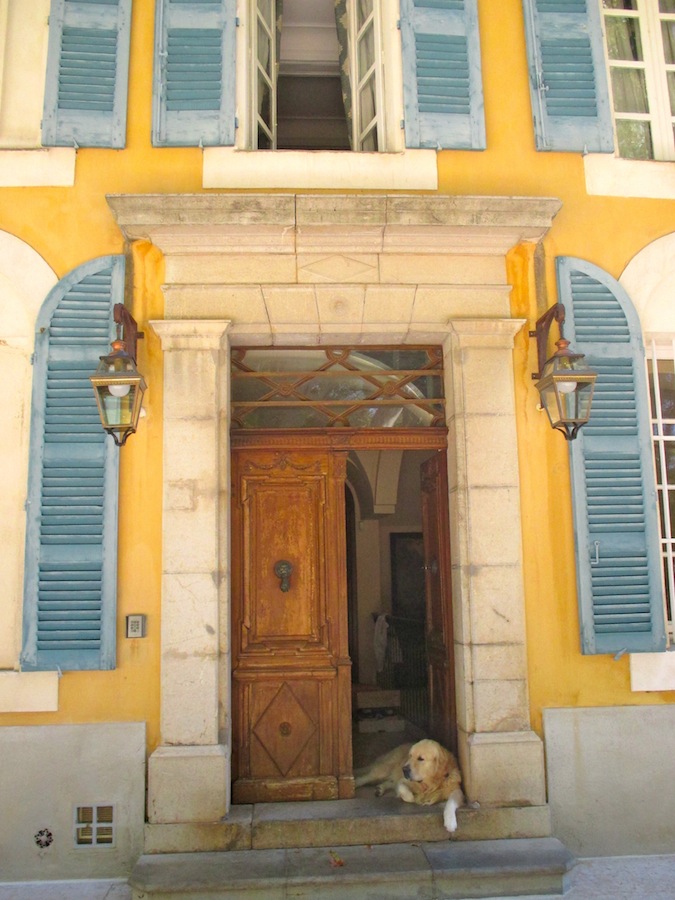
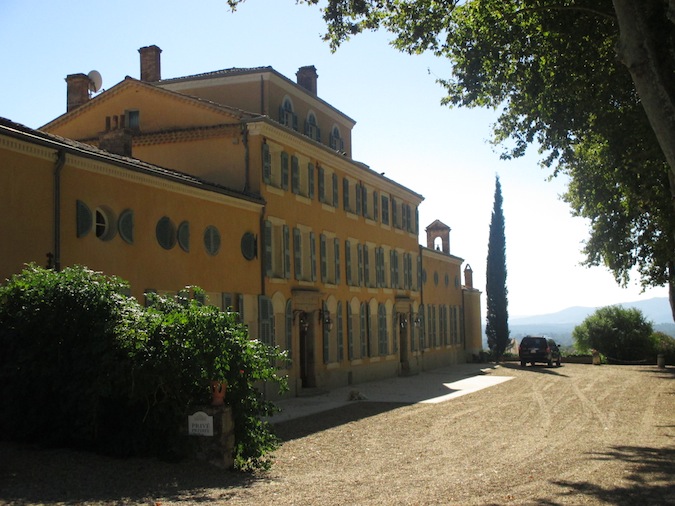
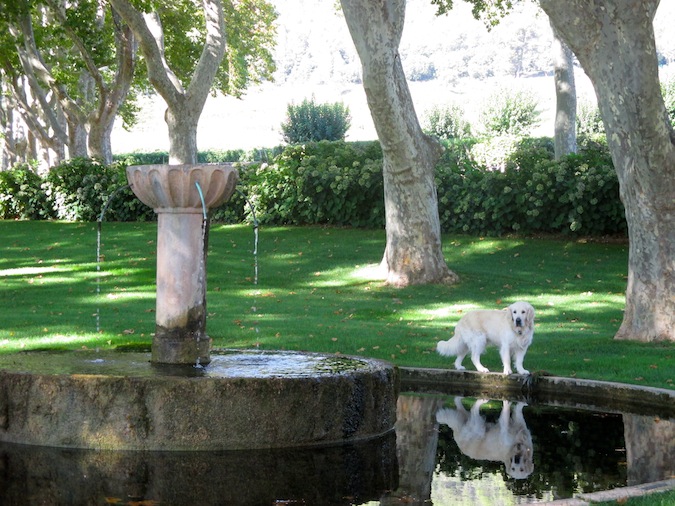 While Provençal rosé is generally considered an affordable, uncomplicated wine, the rosés of Château D'Esclans are unique in the sense that they offer that experience...and much, much more. The wines of this Château represent a paradigm shift in the way rosé is made and enjoyed, offering four distinctly different wines at four very different price points. As you might expect, it took a unique man with an inspired vision to accomplish this feat.Owner Sacha Lichine, son of Bordeaux legend Alexis Lichine, acquired Château d’Esclans in 2006. His roots had been firmly established in Bordeaux but following his father's passing and subsequent sale of the family's fourth growth Bordeaux estate, Château Prieuré Lichine, Sacha decided to make the leap from Bordeaux to Provence, a decision that definitely surprised some. To accomplish his goal of crafting a rosé like no other, Sacha knew he needed a winemaker that had spent his career on the forefront of vinous innovation, a winemaker like Patrick Léon.
While Provençal rosé is generally considered an affordable, uncomplicated wine, the rosés of Château D'Esclans are unique in the sense that they offer that experience...and much, much more. The wines of this Château represent a paradigm shift in the way rosé is made and enjoyed, offering four distinctly different wines at four very different price points. As you might expect, it took a unique man with an inspired vision to accomplish this feat.Owner Sacha Lichine, son of Bordeaux legend Alexis Lichine, acquired Château d’Esclans in 2006. His roots had been firmly established in Bordeaux but following his father's passing and subsequent sale of the family's fourth growth Bordeaux estate, Château Prieuré Lichine, Sacha decided to make the leap from Bordeaux to Provence, a decision that definitely surprised some. To accomplish his goal of crafting a rosé like no other, Sacha knew he needed a winemaker that had spent his career on the forefront of vinous innovation, a winemaker like Patrick Léon.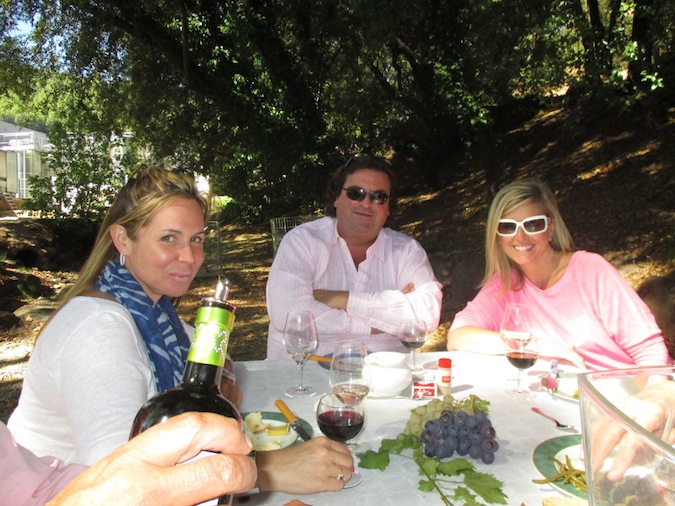
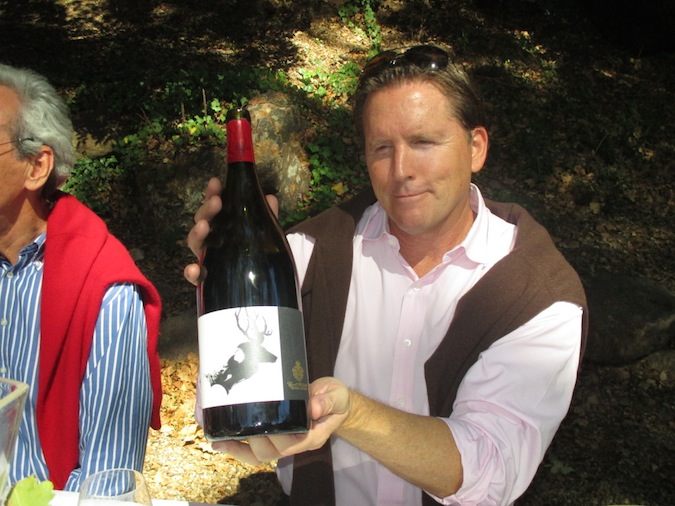
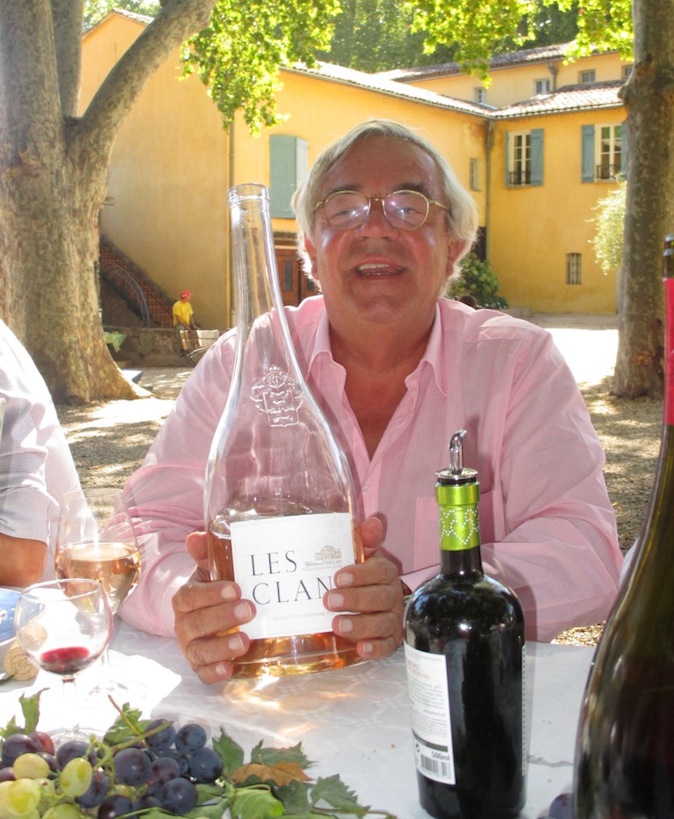 Patrick Léon is a Bordeaux native with an extensive education in Oenology. Even if you're not familiar with his name, you're probably familiar with his work. In addition to working with Sacha's father, Patrick spent the majority of his career as Managing Director of Baron Phillipe de Rothschild. This position required him to oversee technical departments including the company’s vineyards and winemaking facilities for such well-known names as Chateau Mouton Rothschild in Bordeaux, Opus One in California, Almaviva in Chile, as well as other wines in the company portfolio.Needless to say, Léon was just the man for the job!
Patrick Léon is a Bordeaux native with an extensive education in Oenology. Even if you're not familiar with his name, you're probably familiar with his work. In addition to working with Sacha's father, Patrick spent the majority of his career as Managing Director of Baron Phillipe de Rothschild. This position required him to oversee technical departments including the company’s vineyards and winemaking facilities for such well-known names as Chateau Mouton Rothschild in Bordeaux, Opus One in California, Almaviva in Chile, as well as other wines in the company portfolio.Needless to say, Léon was just the man for the job!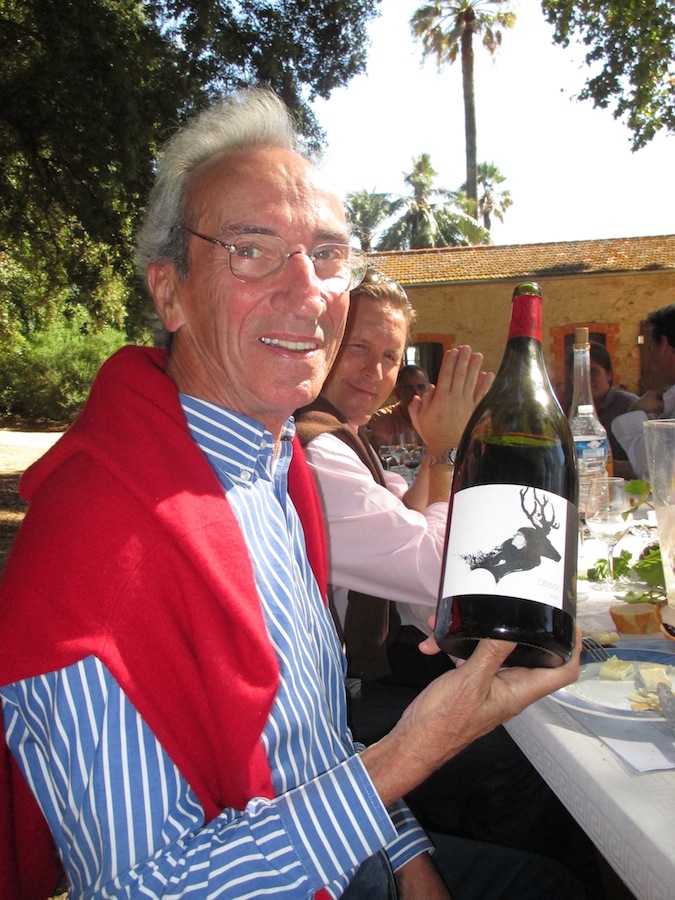
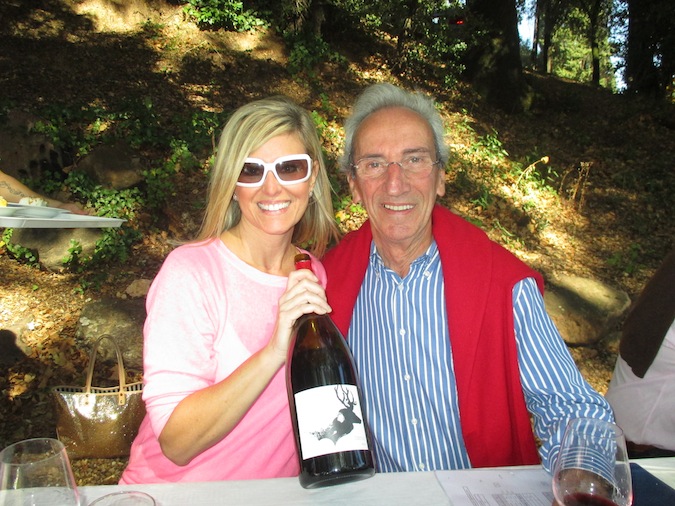 Château D'Esclans is located in the Department of the Var, approximately 15 miles northwest of the ancient Roman city of Frejus on the Mediterranean coast. The first traces of the chateau’s site date back to Gaullist times during which its location served as a lookout point to spot intruders coming by boat into the Gulf of Frejus. The chateau’s cellar structure or foundation (known today as the oldest in the region) housed an original Chateau that was given by the Comte de Provence to Gérard De Villeneuve, in 1201.The current chateau, inspired by Tuscan villa design, was built during the mid 19th century. The Château has 108 acres of vineyards while the total property consists of 659 acres. The primary grape grown here is Grenache followed by Vermentino (aka Rolle). Other grapes include Cinsault, Merlot, Mourvèdre, Syrah, and Tibouren. The château is known for its old Grenache vines which produce grapes that offer greater concentration of flavor than younger vines. As the elevation of the vineyards increases, so do the age of the vines and the highest elevated lot consists of 90 year old vines.
Château D'Esclans is located in the Department of the Var, approximately 15 miles northwest of the ancient Roman city of Frejus on the Mediterranean coast. The first traces of the chateau’s site date back to Gaullist times during which its location served as a lookout point to spot intruders coming by boat into the Gulf of Frejus. The chateau’s cellar structure or foundation (known today as the oldest in the region) housed an original Chateau that was given by the Comte de Provence to Gérard De Villeneuve, in 1201.The current chateau, inspired by Tuscan villa design, was built during the mid 19th century. The Château has 108 acres of vineyards while the total property consists of 659 acres. The primary grape grown here is Grenache followed by Vermentino (aka Rolle). Other grapes include Cinsault, Merlot, Mourvèdre, Syrah, and Tibouren. The château is known for its old Grenache vines which produce grapes that offer greater concentration of flavor than younger vines. As the elevation of the vineyards increases, so do the age of the vines and the highest elevated lot consists of 90 year old vines.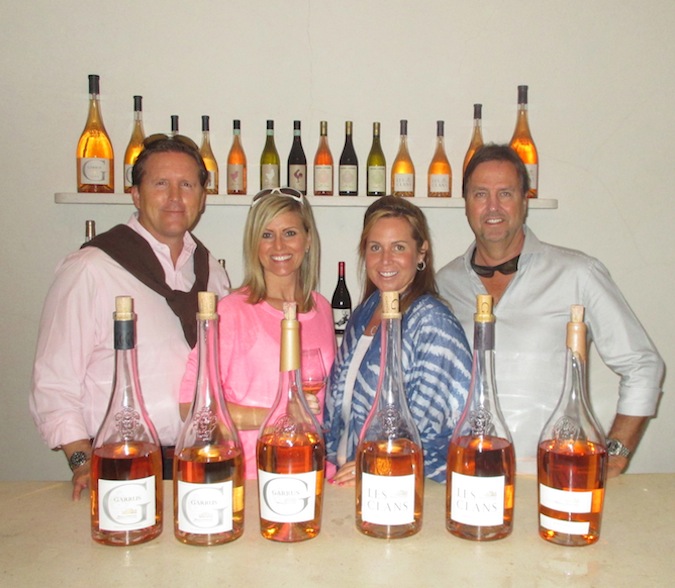
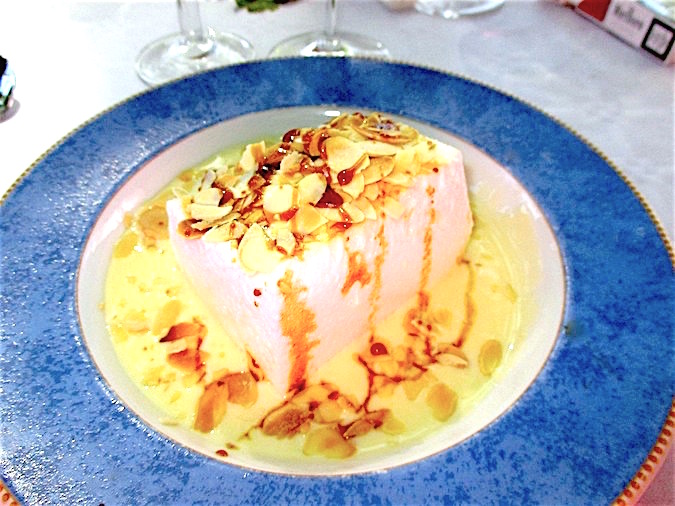 We had the opportunity to visit Château D'Esclans on a gloriously sunny day during the September harvest. As you might expect, the property is breathtakingly beautiful and in addition to the vineyards and winemaking facility, features a stately Tuscan villa surrounded by a rolling green lawn studded with oak trees. As we arrived for our visit the sun was filtering through the canopy of trees while two Golden retrievers frolicked in the fountains chasing koi.As we toured the state of the art winemaking facility it was clear harvest was in full swing - the excitement was palpable! The thrum of the sorting table filled the air as crates of freshly-picked grapes were lined up to be processed. The temperature-controlled facility had all the latest technology including an optical sorter, state of the art lab and oodles of oak barrels for the more expensive cuvées. Since the Chateau's inaugural 2006 vintage of 100,000 bottles, total production has jumped to 1.5 million bottles annually. Lichine's hunch that wine lovers would want to experience the glamorous South of France through his line of rosé wines was right on the money.
We had the opportunity to visit Château D'Esclans on a gloriously sunny day during the September harvest. As you might expect, the property is breathtakingly beautiful and in addition to the vineyards and winemaking facility, features a stately Tuscan villa surrounded by a rolling green lawn studded with oak trees. As we arrived for our visit the sun was filtering through the canopy of trees while two Golden retrievers frolicked in the fountains chasing koi.As we toured the state of the art winemaking facility it was clear harvest was in full swing - the excitement was palpable! The thrum of the sorting table filled the air as crates of freshly-picked grapes were lined up to be processed. The temperature-controlled facility had all the latest technology including an optical sorter, state of the art lab and oodles of oak barrels for the more expensive cuvées. Since the Chateau's inaugural 2006 vintage of 100,000 bottles, total production has jumped to 1.5 million bottles annually. Lichine's hunch that wine lovers would want to experience the glamorous South of France through his line of rosé wines was right on the money.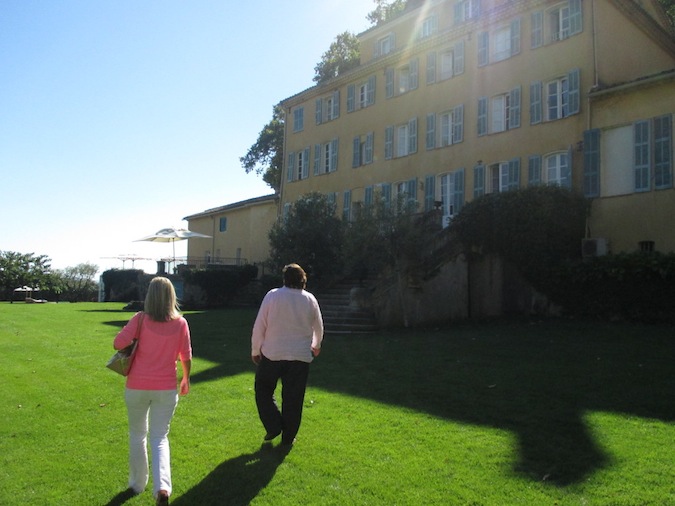
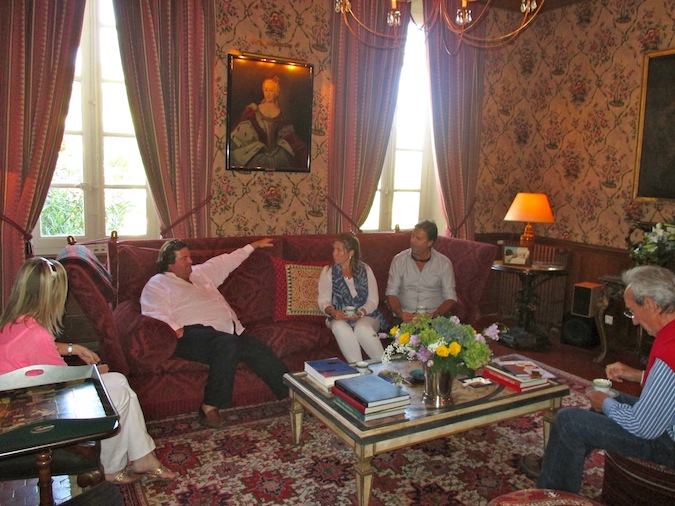 After our tour of the facility, we enjoyed a tasting of the Chateau's 2009, 2011 and 2012 Les Clans and Garrus rosés from large format, 3-liter bottles. While historically, rosés were intended for immediate gratification, the Les Clans and Garrus offerings were crafted with the intention of aging with grace. The Les Clans typically drinks more like a White Burgundy with a generous, viscous mouthfeel accented by lovely notes of red fruit. The Garrus on the other hand receives a more generous oak regimen resulting in a more spice-tinged, structured profile. The 2011 and 2012 vintages of both wines were still rife with glorious, youthful fruit complemented by varying degrees of spice and tannin. The 2009 vintage on the other hand truly demonstrated the age-worthiness of these wines: while the fruit was more muted, the wait was rewarded with more complexity, refinement and depth of flavor in both wines.As we wrapped up our tasting we were invited to stay for the Harvest Lunch which we immediately accepted. We were very pleased to learn Sacha Lichine, Patrick Léon and those bottles of Les Clans and Garrus would be joining us! We lingered over the delightful meal, enjoying the remainder of the rosé wines as well the Déesse Diane, a Côtes de Provence red wine also produced by the Chateau. The delightful blend of Syrah and Mourvèdre featured notes of lovely, lush dark fruit accented by spice and garrigue, the collective term referring to the region's native flora (juniper, rosemary, thyme and lavender) which often manifests in its wines.Lunch was followed by a stroll across the verdant green lawn and coffee at Villa Lichine with our gracious hosts. And as we reflected on our delightful day, we agreed that while Château D'Esclans may be one of the wine world's hottest new brands, the heart of the operation, and perhaps the key to its success is its foundation in generations of hospitality and the storied lifestyle its wines represent.
After our tour of the facility, we enjoyed a tasting of the Chateau's 2009, 2011 and 2012 Les Clans and Garrus rosés from large format, 3-liter bottles. While historically, rosés were intended for immediate gratification, the Les Clans and Garrus offerings were crafted with the intention of aging with grace. The Les Clans typically drinks more like a White Burgundy with a generous, viscous mouthfeel accented by lovely notes of red fruit. The Garrus on the other hand receives a more generous oak regimen resulting in a more spice-tinged, structured profile. The 2011 and 2012 vintages of both wines were still rife with glorious, youthful fruit complemented by varying degrees of spice and tannin. The 2009 vintage on the other hand truly demonstrated the age-worthiness of these wines: while the fruit was more muted, the wait was rewarded with more complexity, refinement and depth of flavor in both wines.As we wrapped up our tasting we were invited to stay for the Harvest Lunch which we immediately accepted. We were very pleased to learn Sacha Lichine, Patrick Léon and those bottles of Les Clans and Garrus would be joining us! We lingered over the delightful meal, enjoying the remainder of the rosé wines as well the Déesse Diane, a Côtes de Provence red wine also produced by the Chateau. The delightful blend of Syrah and Mourvèdre featured notes of lovely, lush dark fruit accented by spice and garrigue, the collective term referring to the region's native flora (juniper, rosemary, thyme and lavender) which often manifests in its wines.Lunch was followed by a stroll across the verdant green lawn and coffee at Villa Lichine with our gracious hosts. And as we reflected on our delightful day, we agreed that while Château D'Esclans may be one of the wine world's hottest new brands, the heart of the operation, and perhaps the key to its success is its foundation in generations of hospitality and the storied lifestyle its wines represent. 2013 Château D'Esclans Whispering Angel Rosé: the entry level Château D'Esclans rosé is a blend of grapes grown from some of the most choice land in the surrounding region of La Motte en Provence. It consists primarily of Grenache, Rolle (aka Vermentino), Cinsault, Syrah and Tibouren. Both free run and pressed juices are vinified entirely in stainless steel and bâtonnage, or lees stirring, is performed twice weekly.This wine is a crystalline pink in color with delicate aromas and flavors of bright citrus and red berries. It is crisp and refreshing on the palate with a snappy, clean finish - delightful!
2013 Château D'Esclans Whispering Angel Rosé: the entry level Château D'Esclans rosé is a blend of grapes grown from some of the most choice land in the surrounding region of La Motte en Provence. It consists primarily of Grenache, Rolle (aka Vermentino), Cinsault, Syrah and Tibouren. Both free run and pressed juices are vinified entirely in stainless steel and bâtonnage, or lees stirring, is performed twice weekly.This wine is a crystalline pink in color with delicate aromas and flavors of bright citrus and red berries. It is crisp and refreshing on the palate with a snappy, clean finish - delightful! 2013 Château D'Esclans Cotes de Provence Rosé: the second wine in the Château's portfolio is made from grapes grown in the Château d’Esclans vineyard, consisting primarily of Grenache and Rolle. It is made entirely from free run juice which is partially vinified in demi-muids (600 L barrels) as well as stainless steel with a temperature controlled maceration.This wine has a pale pink color and mineral-tinged aromas of white peach and red berries. On the palate a creamy texture accompanies pleasant cherry and strawberry flavors with a hint of lavender and spice. This wine most closely approximates a true Provencal rose and is a wonderful accompaniment to food such as charcuterie, salads and shellfish.
2013 Château D'Esclans Cotes de Provence Rosé: the second wine in the Château's portfolio is made from grapes grown in the Château d’Esclans vineyard, consisting primarily of Grenache and Rolle. It is made entirely from free run juice which is partially vinified in demi-muids (600 L barrels) as well as stainless steel with a temperature controlled maceration.This wine has a pale pink color and mineral-tinged aromas of white peach and red berries. On the palate a creamy texture accompanies pleasant cherry and strawberry flavors with a hint of lavender and spice. This wine most closely approximates a true Provencal rose and is a wonderful accompaniment to food such as charcuterie, salads and shellfish. 2012 Château D'Esclans Les Clans Rosé: This is where the departure from traditional rosé really begins! The grapes for Les Clans are selected from old vines consisting primarily of Grenache and Rolle. This wine is made from 90% free run juice and 10% first slight pressing. Alcoholic fermentation takes place in new and second year demi-muids. Burgundian style bâtonnage occurs twice weekly for ten months to enhance creaminess and complexity.This wine has fragrant aromas of red berries, white peach and spice and dazzles on the palate with layers of strawberry, cherry, spice and hint of lavender. The lovely complexity accompanies a luxuriously creamy mouthfeel followed by a long, lingering finish. This wine would pair beautifully with everything from rich seafood dishes to roasted chicken!
2012 Château D'Esclans Les Clans Rosé: This is where the departure from traditional rosé really begins! The grapes for Les Clans are selected from old vines consisting primarily of Grenache and Rolle. This wine is made from 90% free run juice and 10% first slight pressing. Alcoholic fermentation takes place in new and second year demi-muids. Burgundian style bâtonnage occurs twice weekly for ten months to enhance creaminess and complexity.This wine has fragrant aromas of red berries, white peach and spice and dazzles on the palate with layers of strawberry, cherry, spice and hint of lavender. The lovely complexity accompanies a luxuriously creamy mouthfeel followed by a long, lingering finish. This wine would pair beautifully with everything from rich seafood dishes to roasted chicken! 2012 Château D'Esclans Garrus Rosé: the grapes for Garrus, the jewel in the Château's vinous crown, are selected from vines grown from parcels bearing old vines consisting of Grenache and Rolle. This wine is made from 90% free run juice, and the alcoholic fermentation takes place in both new and second year demi-muids. For 10 months Burgundian style bâtonnage occurs twice weekly.A beautiful rose petal pink color, this wine has heady aromas of raspberry, ginger and herbs. On the palate this full-bodied rosé exhibits flavors of red berries, vanilla and spice framed by tannins and acidity which synergize beautifully as the wine opens up. This wine is dynamic in the glass and very food-friendly with the potential to stand up to dishes with some heft including beef, lamb or other grilled meats.Cheers,
2012 Château D'Esclans Garrus Rosé: the grapes for Garrus, the jewel in the Château's vinous crown, are selected from vines grown from parcels bearing old vines consisting of Grenache and Rolle. This wine is made from 90% free run juice, and the alcoholic fermentation takes place in both new and second year demi-muids. For 10 months Burgundian style bâtonnage occurs twice weekly.A beautiful rose petal pink color, this wine has heady aromas of raspberry, ginger and herbs. On the palate this full-bodied rosé exhibits flavors of red berries, vanilla and spice framed by tannins and acidity which synergize beautifully as the wine opens up. This wine is dynamic in the glass and very food-friendly with the potential to stand up to dishes with some heft including beef, lamb or other grilled meats.Cheers,
I hope your Fourth of July festivities were nothing short of fabulous and that your month is off to a great start! I hope you enjoyed exploring our wine recommendations for the holiday weekend and it is with distinct pleasure I present to you our latest Wines of the Week, the rosés of Château D’Esclans. Provence is widely considered the birthplace... Read More
The post Wines of the Week: The Provençal Rosés of Château D’Esclans! appeared first on The Glamorous Gourmet.

I hope your Fourth of July festivities were nothing short of fabulous and that your month is off to a great start! I hope you enjoyed exploring our wine recommendations for the holiday weekend and it is with distinct pleasure I present to you our latest Wines of the Week, the rosés of Château D’Esclans.
Before I introduce this fabulous producer from the South of France, a little more on the topic of rosé wine. As a (self-appointed) Ambassador of this most enjoyable vinous genre, I recently included a dry rosé in my monthly wine club shipment and to my surprise, I heard from a few clients asking why I would include a “pink” wine in the monthly shipment. It was then, my fellow wine lovers, I realized my job as rosé Ambassador was not done! Not only are pink wines “acceptable,” but a dry, Provençal-style rosé is the quintessential Summer wine and should have its place in every wine lover’s repertoire. But in case you’re not convinced, let me clarify even further.
Provence is widely considered the birthplace of dry rosé and continues to be the benchmark against which all quality rosé is measured. These wines have a few key distinguishing characteristics, in addition to being (1) pretty affordable they are generally (2) light pink in color with (3) delightful aromas of red berries. On the palate, (4) they are delightfully crisp, refreshing and fruity but this style of rosé has (5) a distinctly dry finish (dry meaning not sweet). Rosé wines are perfect for slaking your thirst on a hot Summer day at the beach or cruising the Cote d’Azur on your mega yacht – depending on how you roll! These wines are not to be confused with the dark pink, cloyingly sweet, pink or “blush” wines you (or I) may have been a fan of in college. The two are stylistically and theoretically very different. As a function of where they’re from, Provençal rosés also seem to have an inherent “Glamour Factor” and are typically consumed in tony resort locations around the world including the Hamptons, Nantucket and, of course, the South of France!

While Provençal rosé is generally considered an affordable, uncomplicated yet enjoyable wine, the rosés of Château D’Esclans are unique in the sense that they offer that experience…and much, much more. The wines of this Château represent a paradigm shift in the way rosé is made and enjoyed, offering four distinctly different wines at four distinctly different price points. It took a unique man with an inspired vision to accomplish this feat. Owner Sacha Lichine (pictured above right), son of Bordeaux legend Alexis Lichine, acquired Château d’Esclans in 2006. His roots had been firmly established in Bordeaux but following his father’s passing and subsequent sale of the family’s fourth growth Bordeaux estate, Château Prieuré Lichine, Sacha decided to make the leap from Bordeaux to rosé, a decision that definitely surprised some. To accomplish his goal of crafting a rosé like no other, Sacha knew he needed a winemaker that had spent his career on the forefront of vinous innovation, a winemaker just like Patrick Léon.

Patrick Léon (pictured above) is a Bordeaux native with an extensive education in Oenology. Even if you’re not familiar with his name, you’re probably familiar with his work. In addition to working with Sacha’s father, Patrick spent the majority of his career as Managing Director for Baron Phillipe de Rothschild. This position required him to oversee technical departments including the company’s vineyards and winemaking facilities for such well-known names as Chateau Mouton Rothschild in Bordeaux, Opus One in California, Almaviva in Chile, as well as other wines in the company portfolio. Needless to say, Patrick Léon was just the man for the job!
Château D’Esclans is located in the Department of the Var, approximately fifteen miles northwest of the ancient Roman city of Frejus on the Mediterranean coast. The first traces of the chateau’s site date back to Gaullist times during which its location served as a lookout point to spot intruders coming by boat into the Gulf of Frejus. The chateau’s cellar structure or foundation (known today as the oldest in the region) housed an original Chateau that was given by the Comte de Provence to Gérard De Villeneuve, in 1201. The current chateau, inspired by Tuscan Villa design, was built during the mid 19th century. The Château has 108 acres of vineyards while the total property consists of 659 acres. The primary grape grown here is Grenache followed by Vermentino (aka Rolle). Other grapes include Cinsault, Merlot, Mourvèdre, Syrah, and Tibouren. The château is known for its old Grenache vines which produce grapes that offer greater concentration of flavor than younger vines. As the elevation of the vineyards increases, so do the age of the vines and the highest elevated lot consists of 90 year old vines.
We had the opportunity to visit Château D’Esclans on a gloriously sunny day during harvest last September. As you might expect, the property is beautiful and in addition to the vineyards and winemaking facility, features a stately Tuscan Villa surrounded by a rolling green lawn studded with oak trees. As we arrived for our visit the sun was filtering through the canopy of trees while Golden retrievers frolicked in the fountains chasing koi – truly a storybook setting! As we toured the state of the art winemaking facility it was clear harvest was in full swing – the excitement in the air was palpable! Crates of freshly-picked grapes were lining up to be processed while the thrum of the sorting table was like caffeine for the ears. The temperature-controlled facility had all the latest technology including an optical sorter, state of the art lab and oodles of oak barrels for the more expensive cuvées. Achieving the Château’s 1.5 million bottle annual production is no easy feat and since the inaugural 2006 vintage, when total production consisted of 100,000 bottles, Château D’Esclans has certainly come a long way! After the tour we enjoyed a comparative tasting of the Chateau’s 2009, 2011 and 2012 Les Clans and Garrus rosés from Jeroboam (3L bottles). Historically, rosés have been intended for immediate gratification and haven’t really been considered worthy of aging. The Les Clans and Garrus however were crafted with the intention of aging with grace. The 2009 vintage of both wines held up beautifully and while the fruit was not as intense as the younger wines, they had rewarded the wait with more complexity, refinement and depth of flavor. As we wrapped up the tasting we were invited to stay for the Harvest Lunch which we immediately accepted. Needless to say we were pleased to learn Sacha Lichine, Patrick Léon and those bottles of Les Clans and Garrus would be joining us for lunch!

 2013 Château D’Esclans Whispering Angel Rosé ($22): the entry level Château D’Esclans rosé is a blend of grapes grown from some of the most choice land in the surrounding region of La Motte en Provence. It consists primarily of Grenache, Rolle (aka Vermentino), Cinsault, Syrah and Tibouren. Both free run and pressed juices are vinified entirely in stainless steel and bâtonnage, or lees stirring, is performed twice weekly.
2013 Château D’Esclans Whispering Angel Rosé ($22): the entry level Château D’Esclans rosé is a blend of grapes grown from some of the most choice land in the surrounding region of La Motte en Provence. It consists primarily of Grenache, Rolle (aka Vermentino), Cinsault, Syrah and Tibouren. Both free run and pressed juices are vinified entirely in stainless steel and bâtonnage, or lees stirring, is performed twice weekly.
This wine is a crystalline pink in color with delicate aromas and flavors of bright citrus and red berries. It is crisp and refreshing on the palate with a snappy, clean finish – delightful!
 2013 Château D’Esclans Cotes de Provence Rosé ($40): the second wine in the Château’s portfolio is made from grapes grown in the Château d’Esclans vineyard, consisting primarily of Grenache and Rolle. It is made entirely from free run juice which is partially vinified in demi-muids (600 L barrels) as well as stainless steel with a temperature controlled maceration.
2013 Château D’Esclans Cotes de Provence Rosé ($40): the second wine in the Château’s portfolio is made from grapes grown in the Château d’Esclans vineyard, consisting primarily of Grenache and Rolle. It is made entirely from free run juice which is partially vinified in demi-muids (600 L barrels) as well as stainless steel with a temperature controlled maceration.
This wine has a pale pink color and mineral-tinged aromas of white peach and red berries. On the palate a creamy texture accompanies pleasant cherry and strawberry flavors with a hint of lavender and spice. This wine most closely approximates a true Provencal rose and is a wonderful accompaniment to food such as charcuterie, salads and shellfish.
 2012 Château D’Esclans Les Clans Rosé ($75): This is where the departure from traditional rosé really begins! The grapes for Les Clans are selected from old vines consisting primarily of Grenache and Rolle. This wine is made from 90% free run juice and 10% first slight pressing. Alcoholic fermentation takes place in new and second year demi-muids. Burgundian style bâtonnage occurs twice weekly for ten months to enhance creaminess and complexity.
2012 Château D’Esclans Les Clans Rosé ($75): This is where the departure from traditional rosé really begins! The grapes for Les Clans are selected from old vines consisting primarily of Grenache and Rolle. This wine is made from 90% free run juice and 10% first slight pressing. Alcoholic fermentation takes place in new and second year demi-muids. Burgundian style bâtonnage occurs twice weekly for ten months to enhance creaminess and complexity.
This wine has fragrant aromas of red berries, white peach and spice and dazzles on the palate with layers of strawberry, cherry, spice and hint of lavender. The lovely complexity accompanies a luxuriously creamy mouthfeel followed by a long, lingering finish. This wine would pair beautifully with everything from rich seafood dishes to roasted chicken!
 2012 Château D’Esclans Garrus Rosé ($99): the grapes for Garrus, the jewel in the Château‘s crown, are selected from vines grown from parcels bearing old vines consisting of Grenache and Rolle. This wine is made from 90% free run juice, and the alcoholic fermentation takes place in both new and second year demi-muids. For 10 months Burgundian style bâtonnage occurs twice weekly.
2012 Château D’Esclans Garrus Rosé ($99): the grapes for Garrus, the jewel in the Château‘s crown, are selected from vines grown from parcels bearing old vines consisting of Grenache and Rolle. This wine is made from 90% free run juice, and the alcoholic fermentation takes place in both new and second year demi-muids. For 10 months Burgundian style bâtonnage occurs twice weekly.
A beautiful rose petal pink color, this wine has heady aromas of raspberry, ginger and herbs. On the palate this full-bodied rosé exhibits flavors of red berries, vanilla and spice framed by tannins and acidity which synergize beautifully as the wine opens up. This wine is dynamic in the glass and very food-friendly with the potential to stand up to dishes with some heft including beef, lamb or other grilled meats.
All of these Château D’Esclans rosés are available at The Wine Atelier. They are unique and special wines and if you’re looking to expand your palate this is one excellent opportunity to do so!
Cheers,
![]()

The Fourth of July is upon us and whether you’re hosting a party at home, spending the day at the beach or traveling to your favorite vacation spot it’s time to select your wines for this festive day!
Summer celebrations often involve groups of friends and family so this is the time of year for wines which are refreshing and delicious that won’t break the bank. Rather than contemplating an aged Bordeaux you’re much more likely to be tending burgers and dogs on the grill while the kids do cannonballs into the pool! From a California bubbly to a juicy Italian red, here are The Wine Atelier’s suggestions for your Fourth of July festivities:
 Limited Edition Domaine Chandon Blanc de Noirs Brut, California, NV ($20): Based on its stylish red, white and blue bottle this is the hands down perfect wine to serve your guests on this most patriotic of holidays! Fortunately, what’s in the bottle is equally as fabulous. This limited edition sparkling wine from California’s Domaine Chandon is made using the Methode Traditionelle (aka Methode Champenoise) the same method used to make Champagne. It is a blend of Pinot Noir and Pinot Meunier, the only two red grapes allowed in the production of Champagne. This sparkling wine is fruit forward and imminently enjoyable when served on its own, but also makes a great selection for making The Glamorous Gourmet’s signature holiday cocktail, the Fourth of July Pomegranate-Aperol Royale!
Limited Edition Domaine Chandon Blanc de Noirs Brut, California, NV ($20): Based on its stylish red, white and blue bottle this is the hands down perfect wine to serve your guests on this most patriotic of holidays! Fortunately, what’s in the bottle is equally as fabulous. This limited edition sparkling wine from California’s Domaine Chandon is made using the Methode Traditionelle (aka Methode Champenoise) the same method used to make Champagne. It is a blend of Pinot Noir and Pinot Meunier, the only two red grapes allowed in the production of Champagne. This sparkling wine is fruit forward and imminently enjoyable when served on its own, but also makes a great selection for making The Glamorous Gourmet’s signature holiday cocktail, the Fourth of July Pomegranate-Aperol Royale!
 Seven Hills Dry Rosé, Columbia Valley, Washington, 2013 ($16): 2013 is the first vintage of this delightful dry rosé from Seven Hills winemaker and owner Casey McClellan whose family has been making wines in Eastern Washington since 1880. Based on specific vineyard blocks of Bordeaux grape varieties which are farmed specifically for this wine, the grapes are hand picked 2-3 weeks prior to the red wine harvest. Crafted in the tradition of classic French Provencal rosés, this wine is delicate and refreshing, pale in color, and bone-dry on the finish (not to be confused with cloyingly sweet white zinfandel or other lesser quality “blush” wines). This rosé is a blend of 70% Cabernet Franc, 15% Petit Verdot and 15% Malbec which exhibits aromas of white flowers and peach followed on the palate by flavors of grapefruit, papaya, fresh herbs and a hint of spice. Due to it’s lovely structure and presence I call this wine the “Red Wine Drinker’s Rosé”!
Seven Hills Dry Rosé, Columbia Valley, Washington, 2013 ($16): 2013 is the first vintage of this delightful dry rosé from Seven Hills winemaker and owner Casey McClellan whose family has been making wines in Eastern Washington since 1880. Based on specific vineyard blocks of Bordeaux grape varieties which are farmed specifically for this wine, the grapes are hand picked 2-3 weeks prior to the red wine harvest. Crafted in the tradition of classic French Provencal rosés, this wine is delicate and refreshing, pale in color, and bone-dry on the finish (not to be confused with cloyingly sweet white zinfandel or other lesser quality “blush” wines). This rosé is a blend of 70% Cabernet Franc, 15% Petit Verdot and 15% Malbec which exhibits aromas of white flowers and peach followed on the palate by flavors of grapefruit, papaya, fresh herbs and a hint of spice. Due to it’s lovely structure and presence I call this wine the “Red Wine Drinker’s Rosé”!
 Banfi Vermentino “La Pettegola” IGT Toscana, Italy, 2013 ($20): This delightfully refreshing Italian white wine makes an excellent alternative for those who are currently fans of Pinot Grigio and/or Sauvignon Blanc. It’s time to branch out with Vermentino, an Italian white grape variety most commonly found in the wines of Sardinia and Liguria. “La Pettegola” refers to the birds of this region and 2013 marks the debut vintage of this wine from Banfi. It is made from 100% Vermentino harvested in coastal Tuscany which is fermented entirely in stainless steel to preserves its fresh fruit and delicate floral aromas and flavors that embody the very essence of Summer. It is perfect for enjoying on its own or paired with Summertime cuisine including a shellfish platter, goat cheese salad or a selection of cheeses.
Banfi Vermentino “La Pettegola” IGT Toscana, Italy, 2013 ($20): This delightfully refreshing Italian white wine makes an excellent alternative for those who are currently fans of Pinot Grigio and/or Sauvignon Blanc. It’s time to branch out with Vermentino, an Italian white grape variety most commonly found in the wines of Sardinia and Liguria. “La Pettegola” refers to the birds of this region and 2013 marks the debut vintage of this wine from Banfi. It is made from 100% Vermentino harvested in coastal Tuscany which is fermented entirely in stainless steel to preserves its fresh fruit and delicate floral aromas and flavors that embody the very essence of Summer. It is perfect for enjoying on its own or paired with Summertime cuisine including a shellfish platter, goat cheese salad or a selection of cheeses.
 Cune Rioja Crianza, Rioja, Spain, 2010 ($14): CVNE (aka Cune) (Compañía Vinicola del Norte de España) is one of the most renowned and historic bodegas in all of Spain. Most recently, its 2004 Imperial Gran Reserva was awarded the coveted title of Wine Spectator’s 2013 Wine of the Year! The Cune Crianza is their entry level wine which is a juicy blend of indigenous red grapes including Tempranillo (80%), Mazuelo (10%) and Garnacha (10%). The grapes are from Rioja Alta vineyards which are known for producing wines with bright fruit that are light on the palate. This red wine is fermented in stainless steel tanks and then aged in American oak barrels for 1 year. The result is a wine with a bright cherry color and aromas of red berries and spice. On the palate, flavors of raspberry, earth and tobacco accompany a bright acidity and grippy tannins.
Cune Rioja Crianza, Rioja, Spain, 2010 ($14): CVNE (aka Cune) (Compañía Vinicola del Norte de España) is one of the most renowned and historic bodegas in all of Spain. Most recently, its 2004 Imperial Gran Reserva was awarded the coveted title of Wine Spectator’s 2013 Wine of the Year! The Cune Crianza is their entry level wine which is a juicy blend of indigenous red grapes including Tempranillo (80%), Mazuelo (10%) and Garnacha (10%). The grapes are from Rioja Alta vineyards which are known for producing wines with bright fruit that are light on the palate. This red wine is fermented in stainless steel tanks and then aged in American oak barrels for 1 year. The result is a wine with a bright cherry color and aromas of red berries and spice. On the palate, flavors of raspberry, earth and tobacco accompany a bright acidity and grippy tannins.
 Sartori di Verona Veronese Regolo IGT, Veneto, Italy, 2010 ($24): The Sartori family has been making wine in Italy’s Veneto region for over a century, ever since Pietro Sartori purchased a small vineyard here in 1898. Today Pietro’s great grandson Andrea is at the helm of the Sartori estate today continuing his great grandfather’s unrelenting quest for quality. Only the best grapes from the hilly vineyards of Valpolicella were selected for this wine which is made from 100% Corvina Veronese grown on clay and calcareous soils. The wine is ultimately aged for approximately 18 to 24 months in medium-to-large sized oak casks followed by a minimum of 4 months in the bottle before release. The end result is a wine with a deep ruby color and aromas of roses and kirsch. On the palate, mouth-filling flavors of ripe blackberry, cherry and spice are accompanied by supple tannins and a delightfully food friendly acidity.
Sartori di Verona Veronese Regolo IGT, Veneto, Italy, 2010 ($24): The Sartori family has been making wine in Italy’s Veneto region for over a century, ever since Pietro Sartori purchased a small vineyard here in 1898. Today Pietro’s great grandson Andrea is at the helm of the Sartori estate today continuing his great grandfather’s unrelenting quest for quality. Only the best grapes from the hilly vineyards of Valpolicella were selected for this wine which is made from 100% Corvina Veronese grown on clay and calcareous soils. The wine is ultimately aged for approximately 18 to 24 months in medium-to-large sized oak casks followed by a minimum of 4 months in the bottle before release. The end result is a wine with a deep ruby color and aromas of roses and kirsch. On the palate, mouth-filling flavors of ripe blackberry, cherry and spice are accompanied by supple tannins and a delightfully food friendly acidity.
All Fourth of July wine selections are available at The Wine Atelier which offers free local delivery in the Boca Raton/Delray Beach area for orders over $50 and $10 shipping for any purchase of 4 bottles or more. To visit The Wine Atelier, please click here and we wish you a very happy and safe Fourth of July!
Cheers,
![]()